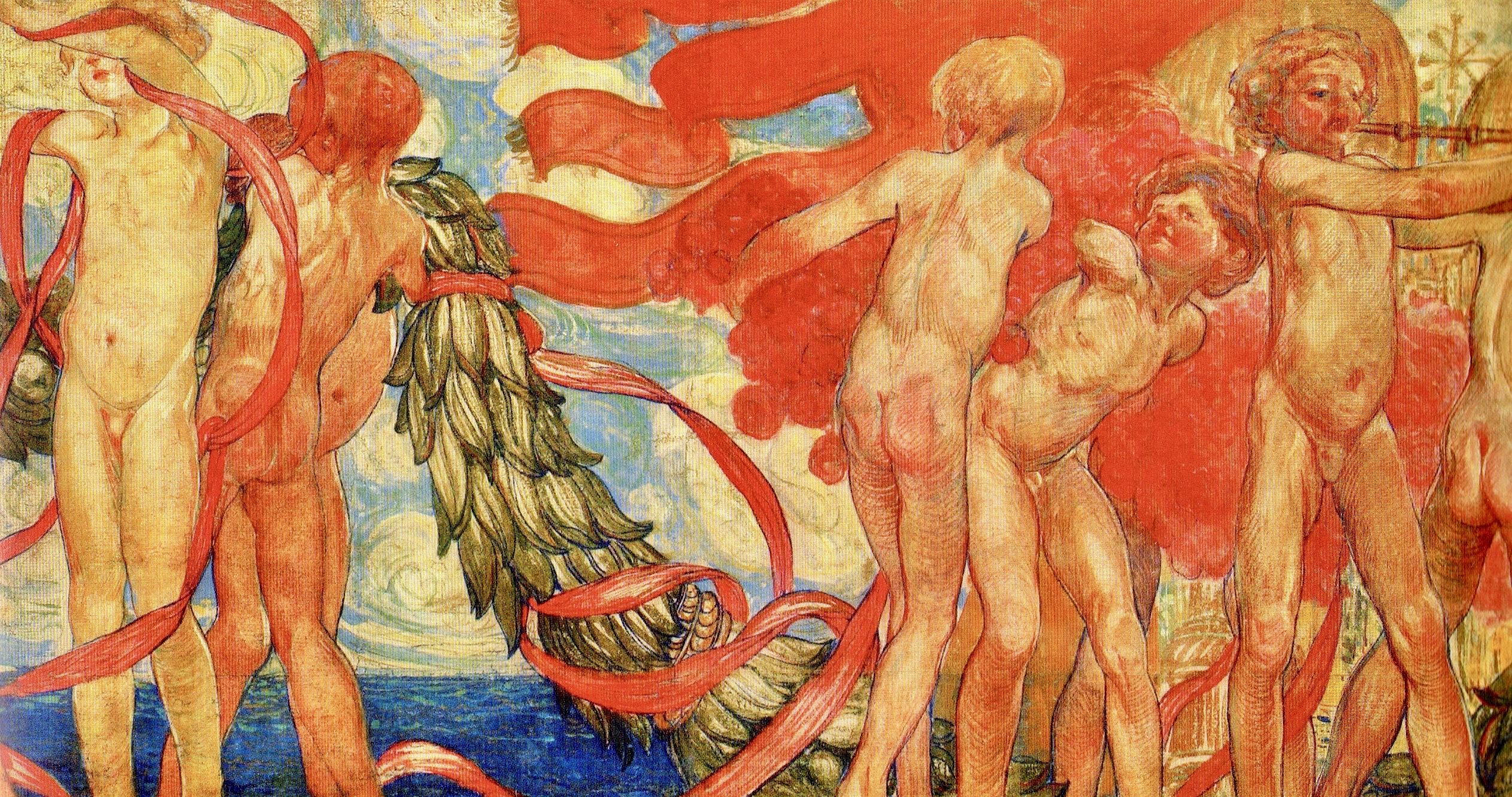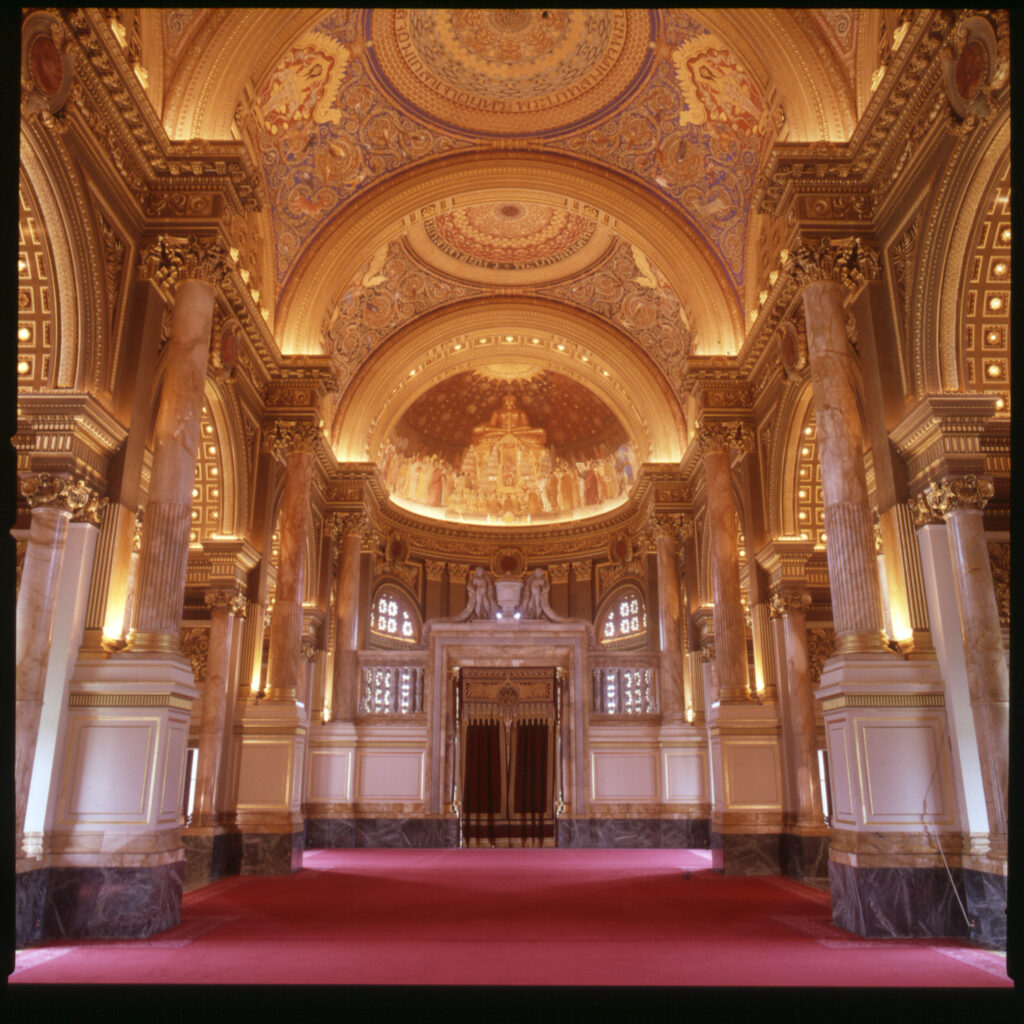The Siamese Period

The Venice Biennale of 1907: the art of dream
In 1907, with Plinio Nomellini and the sculptor Edoardo De Albertis, Chini organizes a room entitled “L’ arte del Sogno“ (The art of Dream) at the Venice Biennale, in which he exhibits Icaro, Il Giogo and Il Battista.
The room has a floor in gres tiles made by the Manifattura, with flower and animal motifs, while the upper part of the walls is decorated with large panels depicting a parade of cherubs wrapped in flowing ribbons and garlands of leaves and flowers on on a light background of sea and sky, executed with great freedom and freshness.
The decoration so impresses the King of Siam Rama V, during his visit to Venice to understand the art of the Western world, that he invites Galileo Chini to Bangkok to decorate his new Throne Hall.
The journey to Siam
It is late spring of 1911 when Galileo begins his extraordinary journey towards Siam.
Galileo accepted the King’s invitation and departs from Genova aboard the steamship Derflinger, headed for Bangkok, where Carlo Rigoli, Giovanni Sguanci, the stucco worker Giuseppe Innocenti and gilder Giovanni Barsi are awaiting to assist him in this massive assignment.
The journey, which the artist recounts in his book “Il tarlo polverizza anche la quercia”, (The termite pulverizes even the Oak) proves full of suggestions and indelible impressions, which will later be translated in many of his works.
In the early days of his stay in Bangkok, Galileo witnesses the incoronation of the new King Rama VI, an experience where he is totally immersed in the spirit of the Orient, helping to stimulate his creativity.

And so for the immense walls of the l’Ananta Samakhom Throne Hall, designed by the Turin architects Annibale Rigotti and Mario Tamagno in neo-Renaissance style, Galileo brings to life the glories and history of the royal dynasty, with a deep adhesion, but always personal to Asian suggestions, blending the Italian Renaissance tradition with the preciousness of the Orient in a work of great visual enchantment.
In 1912, after a brief return to Italy for business and personal reasons he resumes his work on the palace. During this period he creates numerous paintings inspired by the Orient, vibrant with light and color, that grasp with intimate participation the various aspects of Siamese life. Outstanding among these is the large canvas titled La festa dell’ultimo dell’anno cinese a Bangkok, one of his masterpieces, now displayed in the Palazzo Pitti museum in Florence.
For his important work in Siam Chini is awarded the country’s highest honor by the King: The Most Exalted Order of the White Elephant.
In September 1913 he returns definitively to Italy, but he will never forget the atmospheres of the Orient that will continue to inspire many of his paintings up until the 1940s. With this same inspiration Chini will also create murals for the interiors of his vacation home in Lido di Camaiore.
From his period in Siam Chini will conserve indelible memories and an important collection of oriental objects that he will donate in 1955 to the Anthropological Museum in Florence.